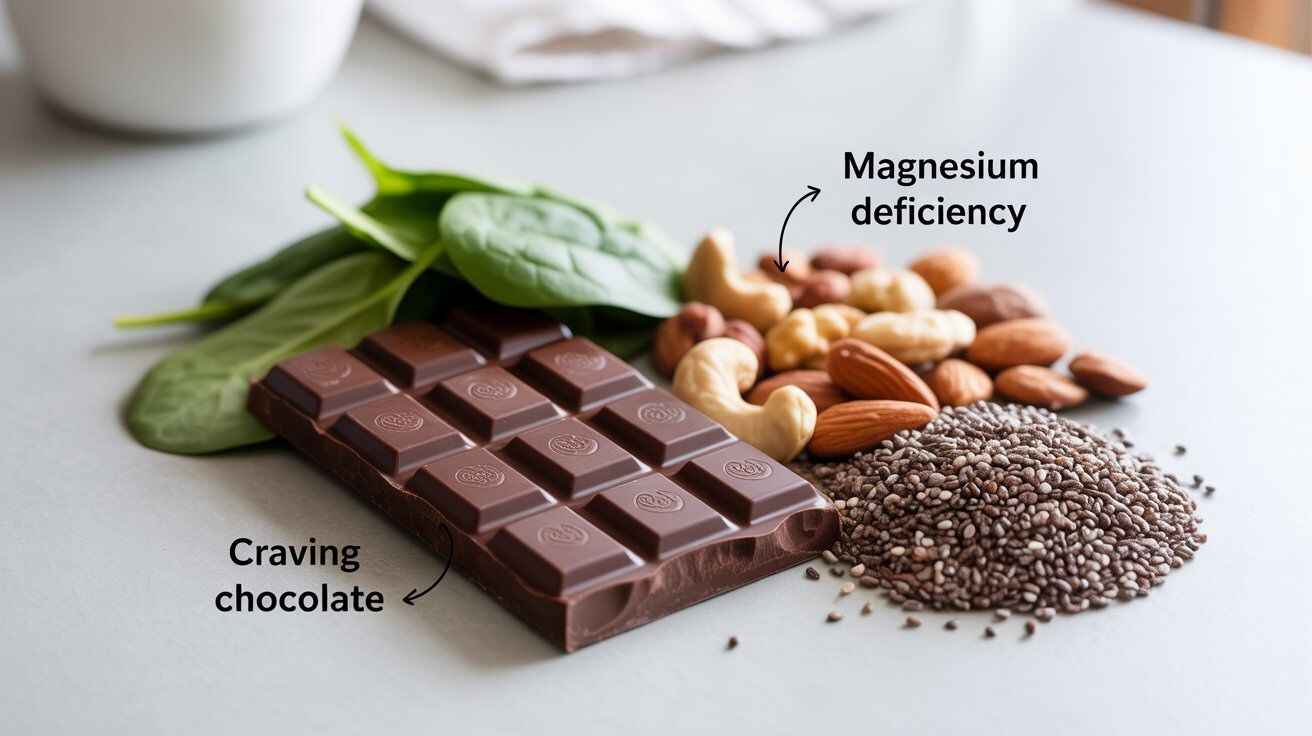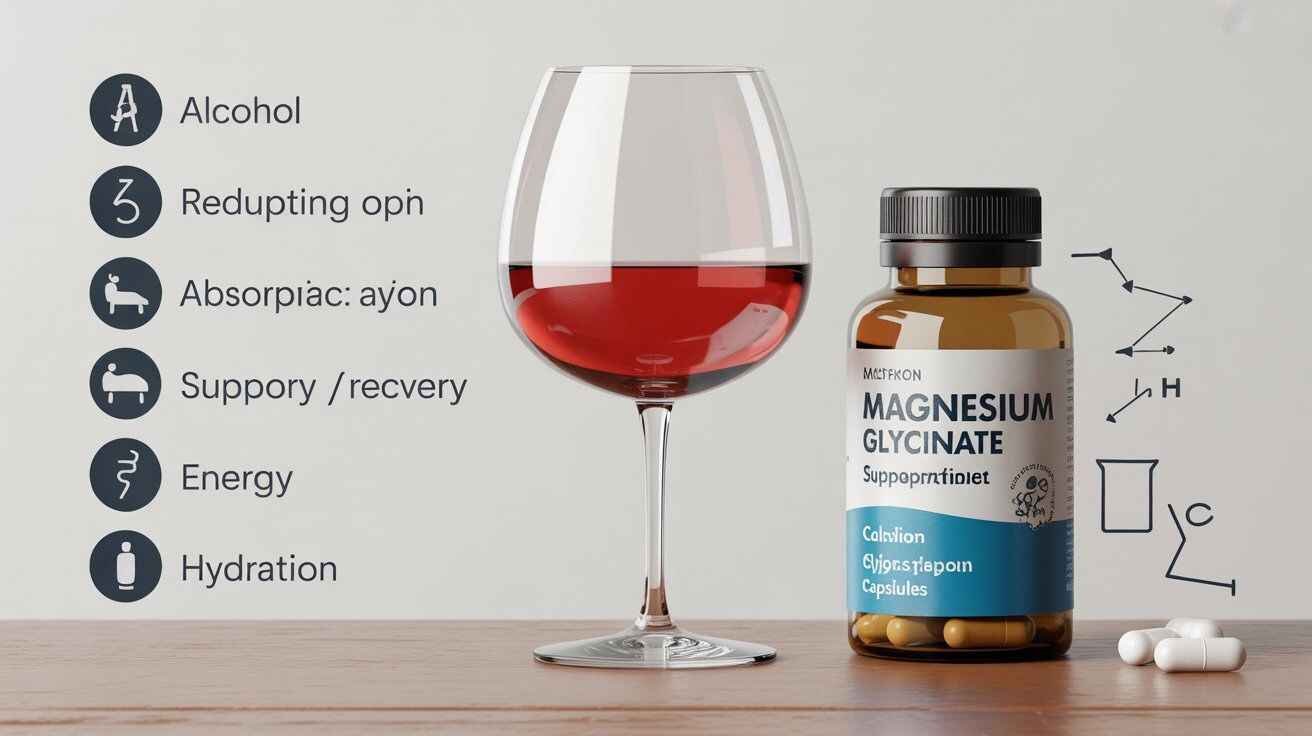Craving chocolate magnesium deficiency is often misunderstood. Learn the real causes of cravings, signs of low magnesium, and the best foods to restore balance.
Craving chocolate magnesium deficiency
Many people wonder if craving chocolate magnesium deficiency is a real connection. Chocolate does contain magnesium, an essential mineral for muscle function, energy, and mood balance.
But cravings are not always about nutrients. Stress, sugar dips, and hormones often play a bigger role. While dark chocolate can boost your magnesium intake, relying on cravings alone isn’t a reliable way to spot deficiency. Understanding the difference helps you choose smarter solutions for both health and satisfaction.
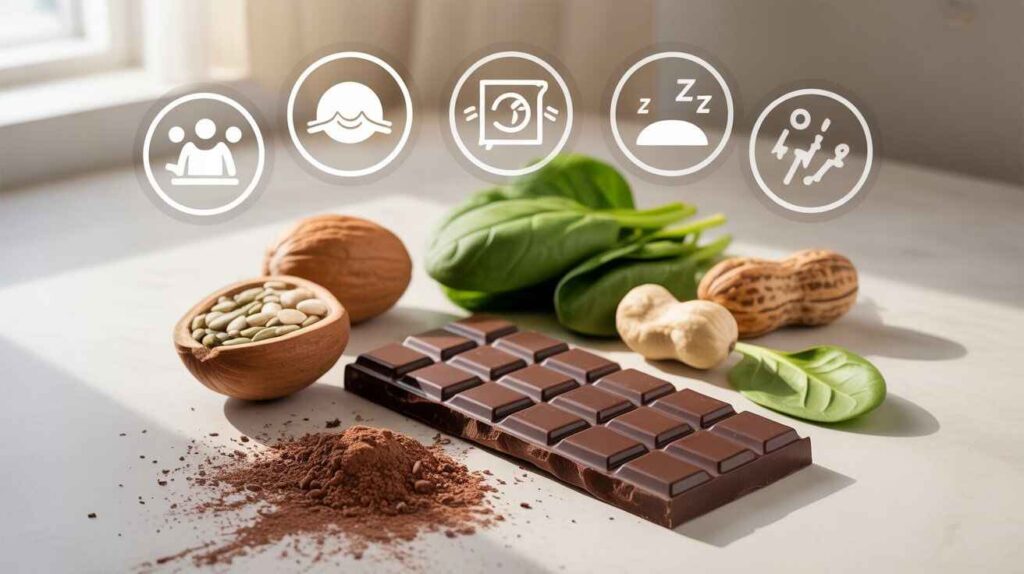
Does Craving Chocolate Mean Magnesium Deficiency?
The link between craving chocolate magnesium deficiency is often overstated. Chocolate contains magnesium, but cravings are more commonly caused by sugar drops, stress, or hormones.
If magnesium deficiency were the reason, people would crave nuts, seeds, or leafy greens, which hold more magnesium. Cravings alone are not proof of deficiency.
Enjoying dark chocolate can support intake, but persistent urges suggest checking overall diet and wellbeing.
Why People Crave Chocolate
Chocolate cravings are rarely just about magnesium. Sugar cravings from low blood sugar, stress relief through comfort eating, and hormonal changes during PMS are common triggers.
The brain also links chocolate with pleasure and reward, reinforcing the habit. Emotional eating and psychology play a major role, often more than nutrients.
While magnesium is one factor, most chocolate cravings stem from mood, hormones, and lifestyle patterns.
The Magnesium Deficiency Theory Explained
The idea of craving chocolate magnesium deficiency comes from chocolate’s magnesium content. Magnesium supports muscles, nerves, energy, and mood, so low levels can affect health.
Older theories suggested cravings were the body’s way of signaling deficiency. But modern research shows cravings are not reliable indicators.
If low magnesium were the cause, people would crave leafy greens, nuts, or seeds instead. Cravings are complex, not just nutrient-driven.
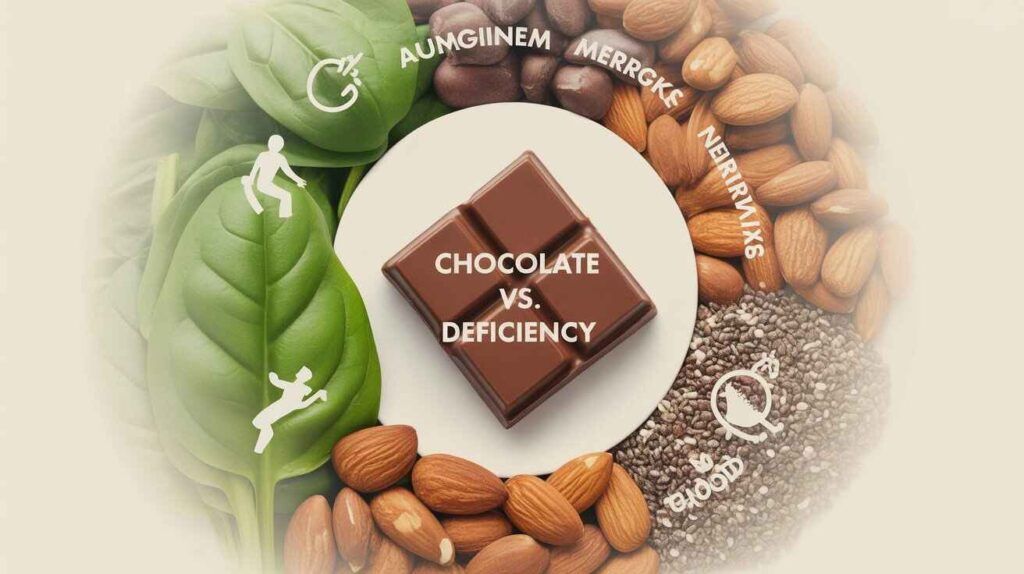
How Much Magnesium Is in Chocolate?
Chocolate does contain magnesium, but amounts vary. Dark chocolate (70% cocoa) has about 60 mg per ounce, while milk chocolate offers far less.
Adults need 310–420 mg daily, so chocolate alone can’t meet requirements. Nuts, seeds, and greens provide more magnesium without added sugar or fat.
Dark chocolate can help balance intake, but treat it as a supplement, not the main source of magnesium.
Signs of Magnesium Deficiency Beyond Cravings
Craving chocolate magnesium deficiency alone is not a strong indicator. Low magnesium often shows as muscle cramps, fatigue, poor sleep, mood swings, or irregular heartbeat.
These symptoms signal the body’s need for magnesium far better than cravings do. Hypomagnesemia can also affect energy and nerve function.
If you notice several of these issues, consult a healthcare professional rather than relying on cravings as your guide.
Best Ways to Address Magnesium Deficiency
| Approach | Details | Why It Helps |
|---|---|---|
| Eat Magnesium-Rich Foods | Leafy greens, nuts, seeds, legumes, whole grains | Provides steady magnesium intake, more effective than just chocolate |
| Include Dark Chocolate (in moderation) | 70% cocoa or higher | Adds magnesium but should not be the main source |
| Consider Magnesium Supplements | Use only under professional guidance | Helps when diet alone is insufficient, prevents unsafe dosing |
| Stay Hydrated | Drink enough water daily | Supports nutrient absorption and reduces fatigue |
| Manage Stress | Relaxation, breathing, mindfulness | Stress depletes magnesium, so control helps preserve balance |
| Prioritize Quality Sleep | Consistent sleep routine | Magnesium aids relaxation and energy regulation |
How to Stop Chocolate Cravings if It’s Not Magnesium
If craving chocolate magnesium deficiency isn’t the cause, focus on habits. Eat balanced meals with protein and fiber to prevent sugar dips.
Stay hydrated, since thirst often feels like hunger. Allow a small piece of dark chocolate to satisfy taste without overindulging.
Simple actions like taking a short walk, reducing stress, or practicing mindful eating can also cut cravings. Managing lifestyle factors often works better than blaming nutrients.
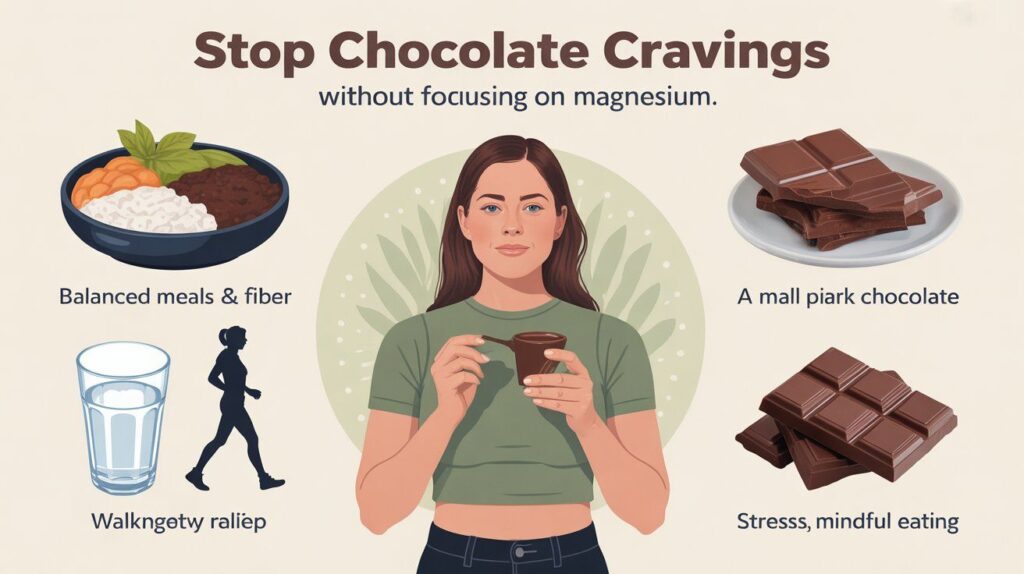
FAQs
Q1: Does craving chocolate mean you have a magnesium deficiency?
A: Not always. While chocolate contains magnesium, cravings are usually influenced by stress, hormones, or sugar dips. Deficiency is only one possible factor.
Q2: What are other signs of magnesium deficiency?
A: Muscle cramps, fatigue, irregular heartbeat, mood swings, and poor sleep are stronger indicators than cravings alone.
Q3: How much dark chocolate would you need to meet your magnesium needs?
A: One ounce of 70% dark chocolate has ~60 mg magnesium. Since adults need ~300–400 mg daily, you’d have to eat too much chocolate to rely on it as your main source.
Q4: What are better sources of magnesium than chocolate?
A: Leafy greens, nuts, seeds, legumes, whole grains, and some fish provide more magnesium without the added sugar and fat of chocolate.
Q5: Should I take a magnesium supplement if I crave chocolate often?
A: Not without professional guidance. If you suspect low magnesium, ask your doctor about testing before supplementing.

Hamid Raza, aged 65, is a seasoned expert in nutrition, health supplements, and wellness, with over four decades of experience researching and educating people about essential minerals like magnesium. His work focuses on helping individuals improve energy, bone health, muscle function, and overall wellness through scientifically-backed magnesium knowledge.
Throughout his career, Hamid has contributed to numerous health articles, research studies, and wellness blogs, making complex nutritional science accessible to everyday readers. Passionate about natural health solutions, he guides readers on choosing the right magnesium supplements for optimal health.

